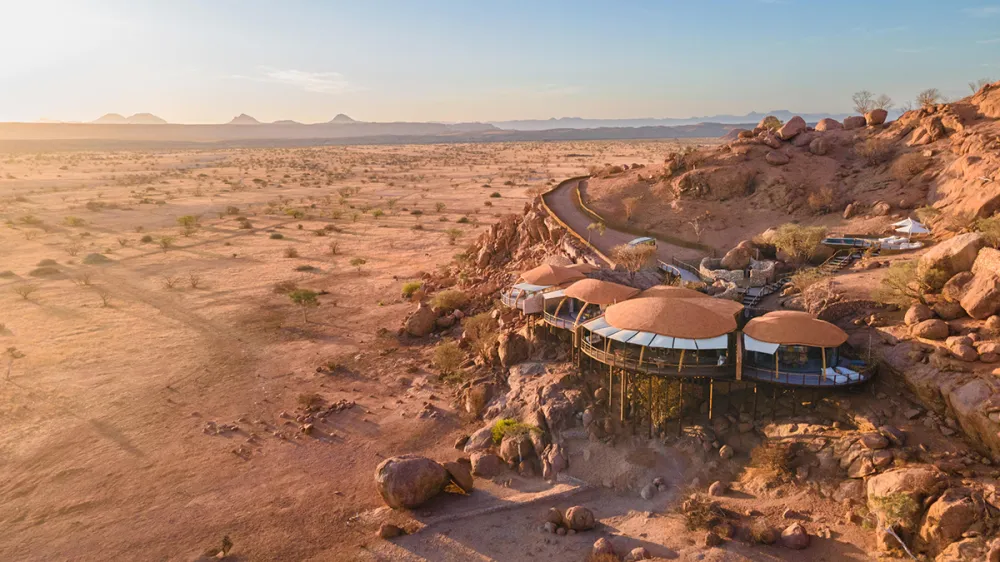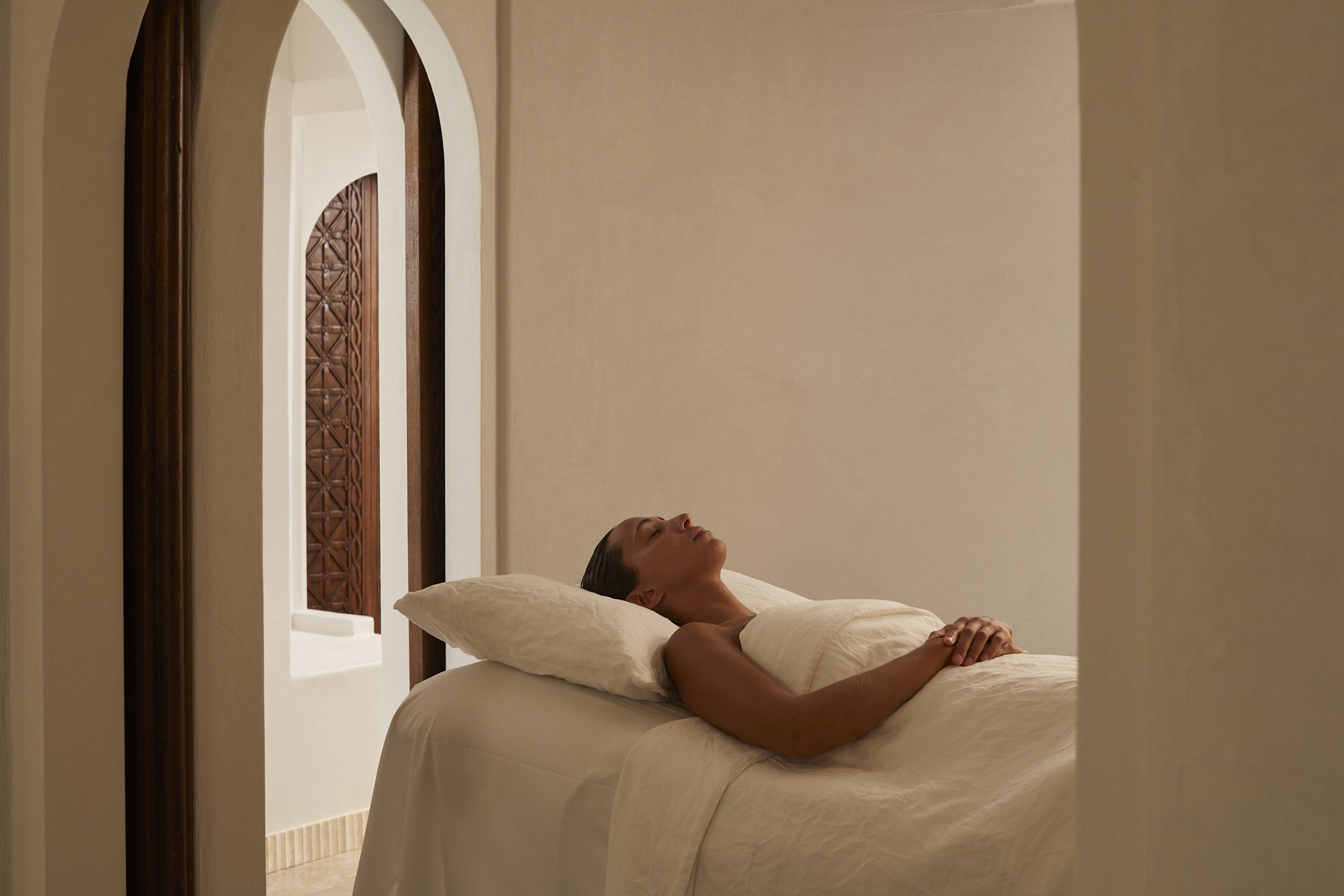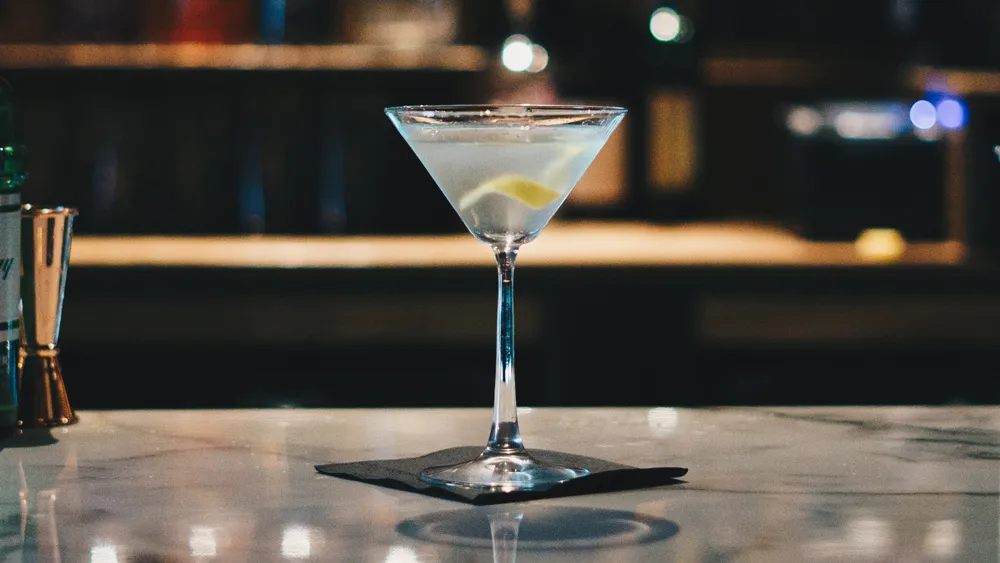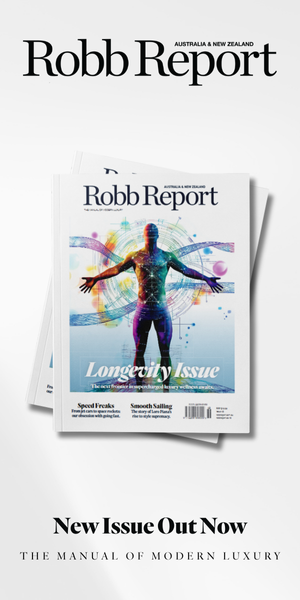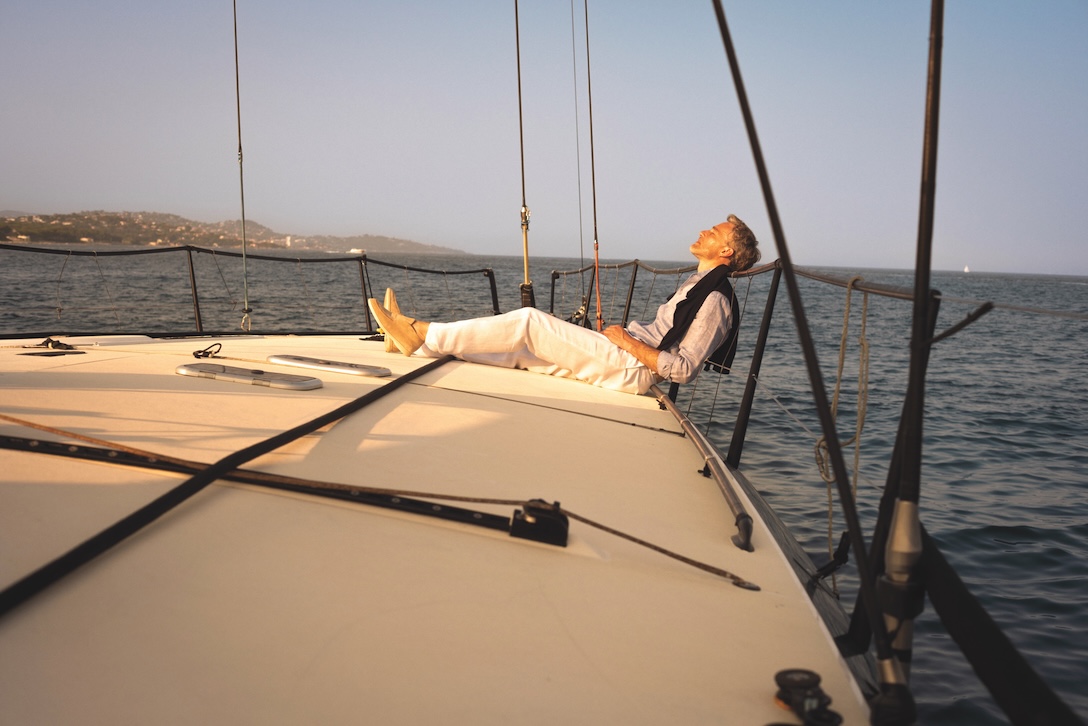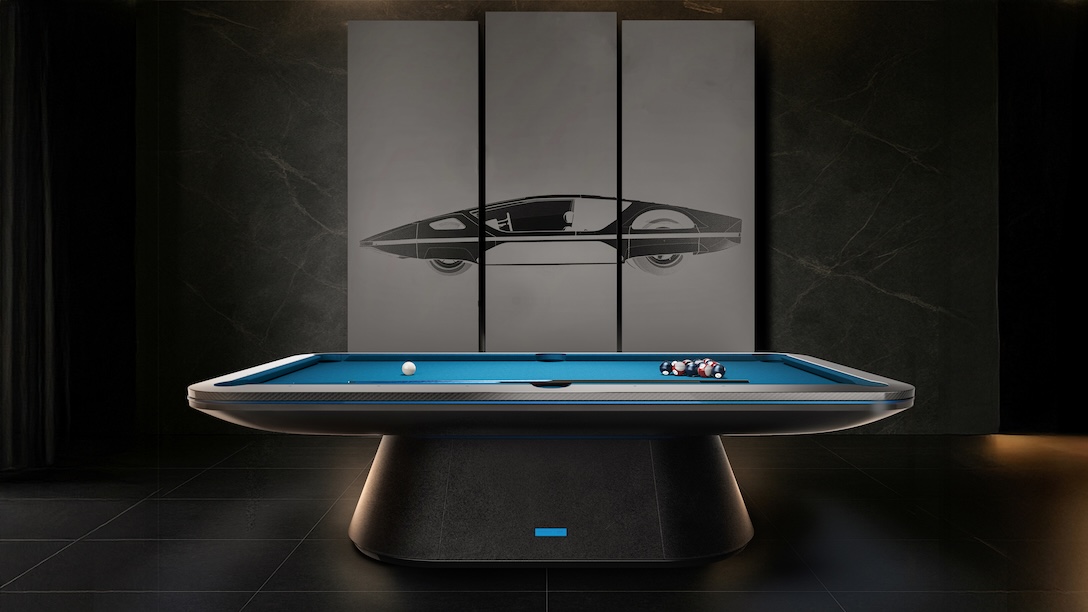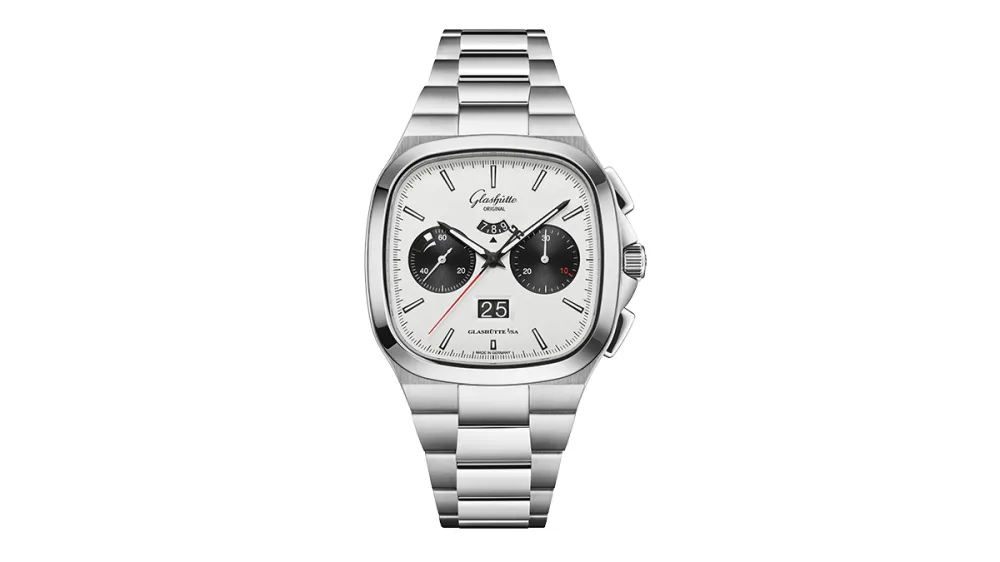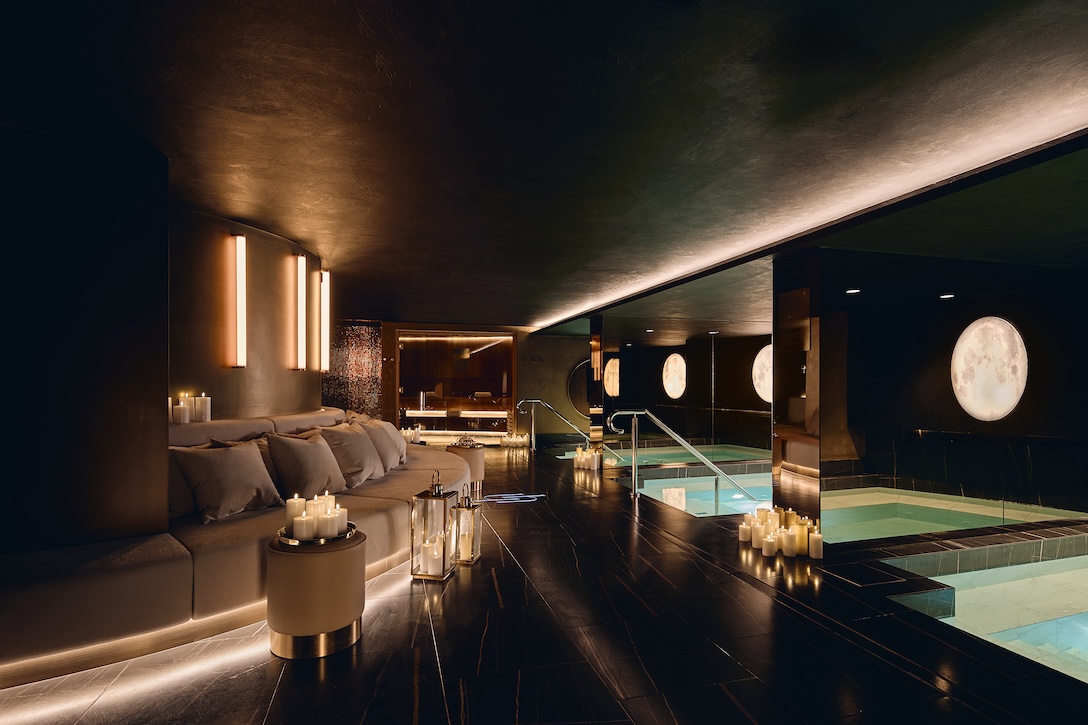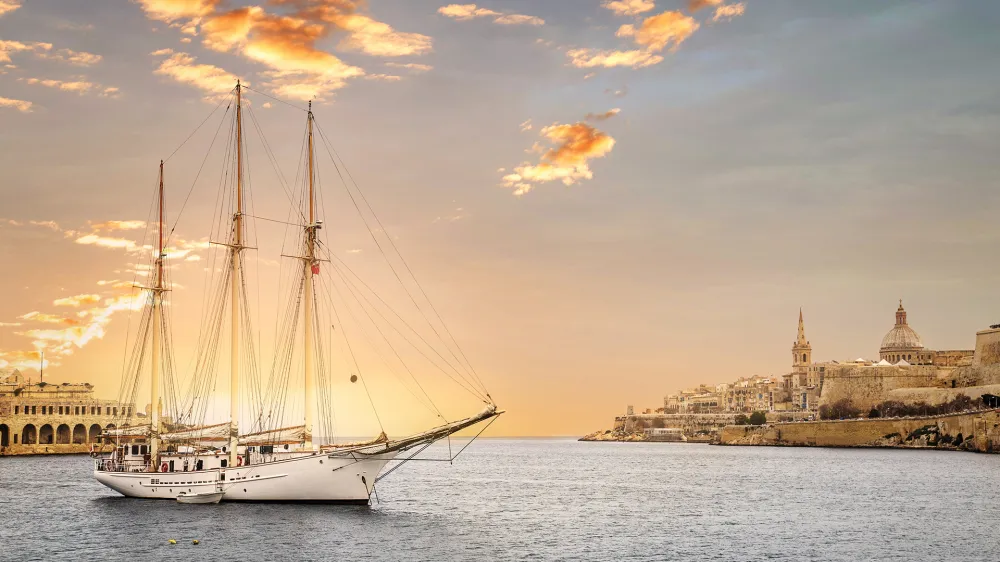
How Malta Became a Modern Traveller’s Luxury Paradise Again
Just south of Italy, the archipelago that rose to wealth and power during the Crusades is modernizing its offerings for visitors and locals alike.
Related articles
They call them Aldo’s fish. The brightly colored, distinctly midcentury patterns on the plates at Villa Bologna Pottery in Malta were designed by Aldo Cremona, who worked there for more than 70 years. Born deaf to a poor family, he had limited schooling and never learned to speak, communicating instead through his vibrant artwork. The facility’s signature scroll design was his handiwork, too, as were a series of water jugs, jauntily daubed with splotches of paint to resemble women. “They were supposed to be saluting admirals, but Aldo didn’t like painting men, so he made them ladies instead,” says the pottery’s owner, Sophie Edwards. Cremona died last year, but there’s still a shelf full of those jugs in the workshop acting as templates for the designs. A small sticker indicates each of their names: Violetta with her bedroom eyes, for instance, or Delft-blue Flora.
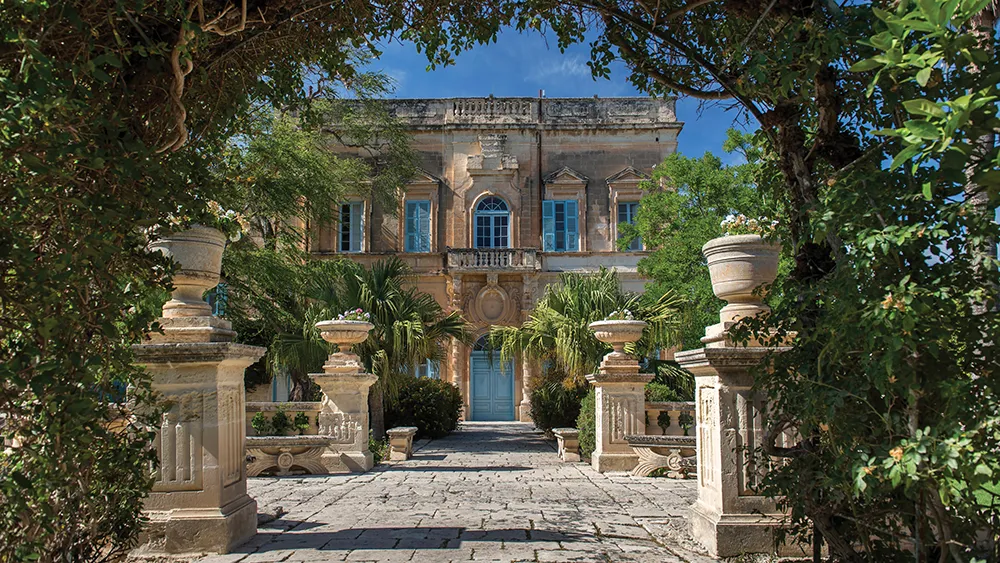
COURTESY OF VILLA BOLOGNA
The workshop itself is almost a century old, founded in 1924 as a philanthropic effort to help employ local women, but it has been reenergized in the three years since Edwards and her husband, Rowley, took over. “Everyone in Malta knows the pottery—the pineapple lamps are popular wedding gifts,” she explains. Now, though, the couple hope to build a bigger audience; last year, they opened their first foreign store, in London’s tony Holland Park, and launched e-commerce for America this spring. Every piece will continue to be handmade.
It’s an unexpected story to those who are at all familiar with Malta. Mention the country and most will think of the military might wielded by the bygone Knights of Malta, and perhaps money, but not making things. Today, though, thanks to an influx of wealthy and design-focused new citizens, the tiny, rocky nation is starting to rebrand itself as a source of, and destination for, serious luxury.
Malta, at just 122 square miles, is composed of three islands: the namesake and largest, plus smaller, rural Gozo, and Comino, a shard wedged between the two. The trio sit squat in the center of the Mediterranean and benefit from naturally deep harbors; such geography and geology made it a squabbled-over strategic possession for centuries, most recently held by the British. (The late Queen Elizabeth lived here as a young wife, and her one-time home will soon open as a museum.)
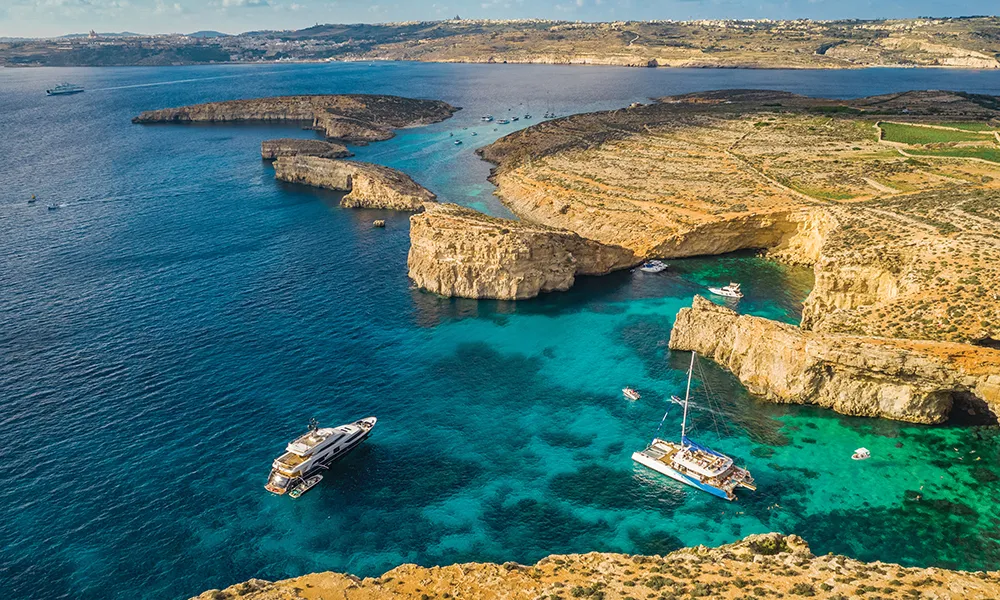
COURTESY OF VILLA BOLOGNA
Malta’s contemporary reputation has focused less on force than on finances, as the country has aimed to act as a Mediterranean answer to the Cayman Islands. Its favorable taxation regime burnished its appeal to wealthy Europeans, who can take up residency here and pay minimal taxes. A citizenship-by-investment program, in which a passport is yours for a million or so euros, has increased the numbers of high-net-worth residents from other regions, too. The policy has not been without controversy since the government introduced it in 2013 under former premier Joseph Muscat—and that administration remains embroiled in the scandal around the murder of investigative journalist Daphne Caruana Galizia six years ago, which precipitated Muscat’s resignation in early 2020 and continues to swirl.
There has been tourism in Malta over the years, but it’s been mostly mass-market. Keen to rebuild after World War II, when the country underwent brutal bombardment by the Axis powers, the Maltese constructed cheap hotels that filled up with sun-seeking Britons and Germans, who provided much-needed economic stimulus in the 1960s and ’70s. But such package holidays are falling from favor, and locals are determined to lure a different caliber of client. “We can’t sustain huge amounts of people like that anymore,” says Maltese interior designer Francis Sultana, who’s based in London and is a cultural ambassador for his homeland, where he has a spectacular house. “Malta has to reinvent itself as a place to live that’s full of arts and culture and with a wonderful sea around it.”
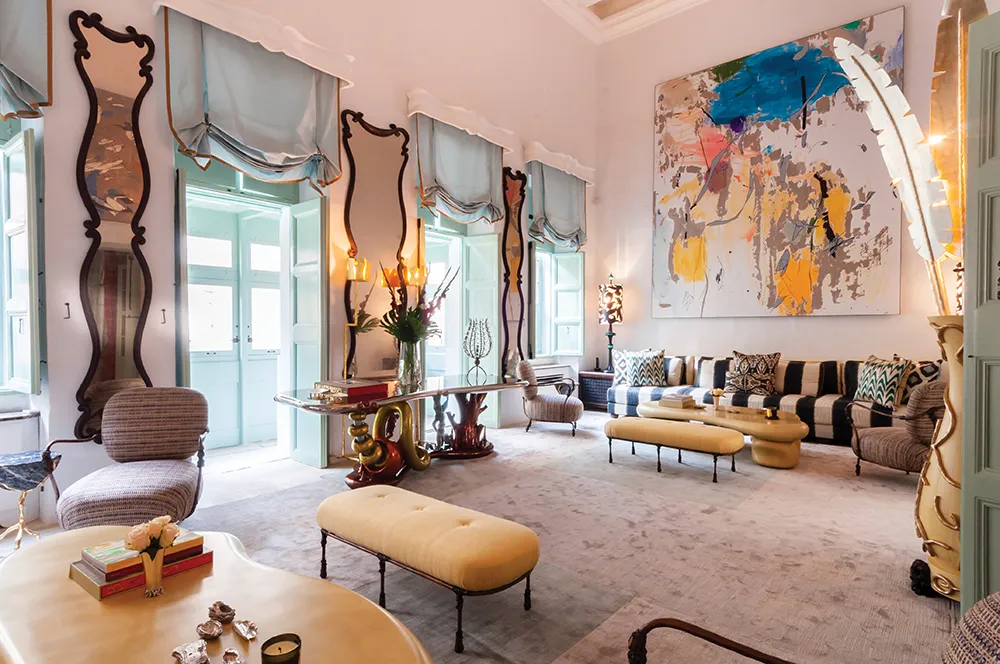
SUPPLIED
To that end, Malta is working to reposition itself via travel specialists, such as the luxury operator Red Savannah, which will introduce the country as a recommended destination this fall. Its interest reflects the rising profile for Malta among elite travelers, which is the hard-won product of the government’s concerted efforts to transform its audience, whether by underwriting new cultural assets, tendering abandoned buildings for renovation, or continuing to expand the citizenship-by-investment scheme. When the first such program filled its quota of 1,800 passports, the government simply launched a second one, slightly tweaked. The firm Latitude Residency and Citizenship helps interested would-be Maltese citizens navigate the red tape.
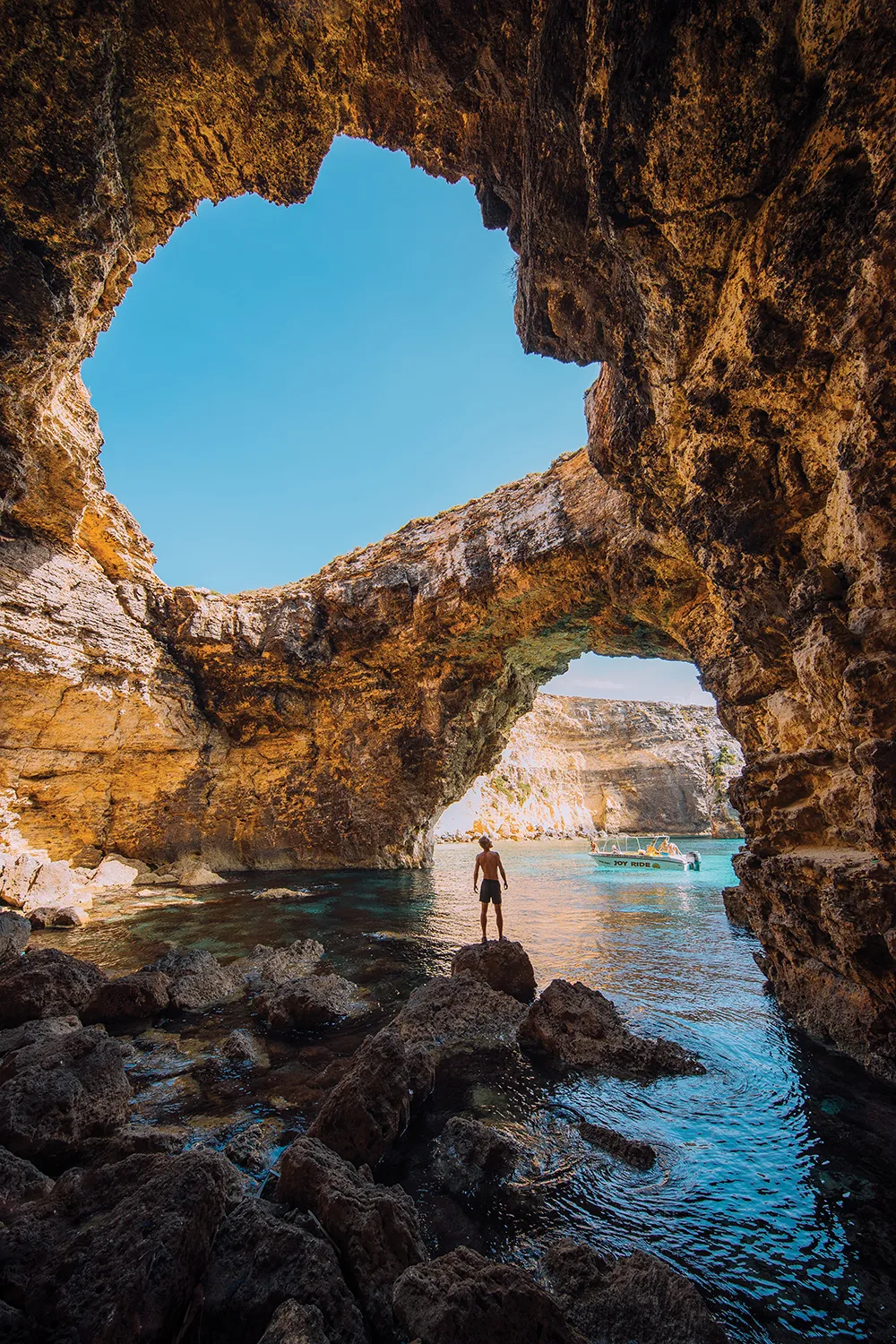
Those new, wealthy tourists and part-time residents are a crucial customer base for Sophie and Rowley Edwards. Sophie grew up partly on the island and had always mulled a return. They were married at Bologna, the country house on whose estate the pottery sits. When she was pregnant with her first child, the now 4-year-old Rocco, the couple visited and found the ceramics workshop in a precarious state, operating with just three staff, including Aldo. “You’d rummage around in the basement and find old molds and bits of pottery,” she recalls. They set about relaunching the company, retaining its retro aesthetic but sharpening its approach to business. They’re now working with interior designers and private clients on custom commissions, all while building a restaurant in the stable block next door to the workshop, an all-day upscale Italian-accented café with its own garden.
Villa Bologna is in the village of Attard, a smallish settlement in the center of the island, but much of the new energy is focused on the country’s capital, postcard-pretty Valletta. Sitting on a rocky outcrop next to the deepest harbor on the northern coast, it was built as a single project in the 1570s, which conferred a pleasing uniformity to its architecture. The aesthetic is the same Ottoman-influenced style seen throughout Venice. Valletta was cannily master-planned in a grid layout, allowing sea breezes to pass through downtown as natural air-conditioning; even today, the shadier streets remain surprisingly cool in midsummer.
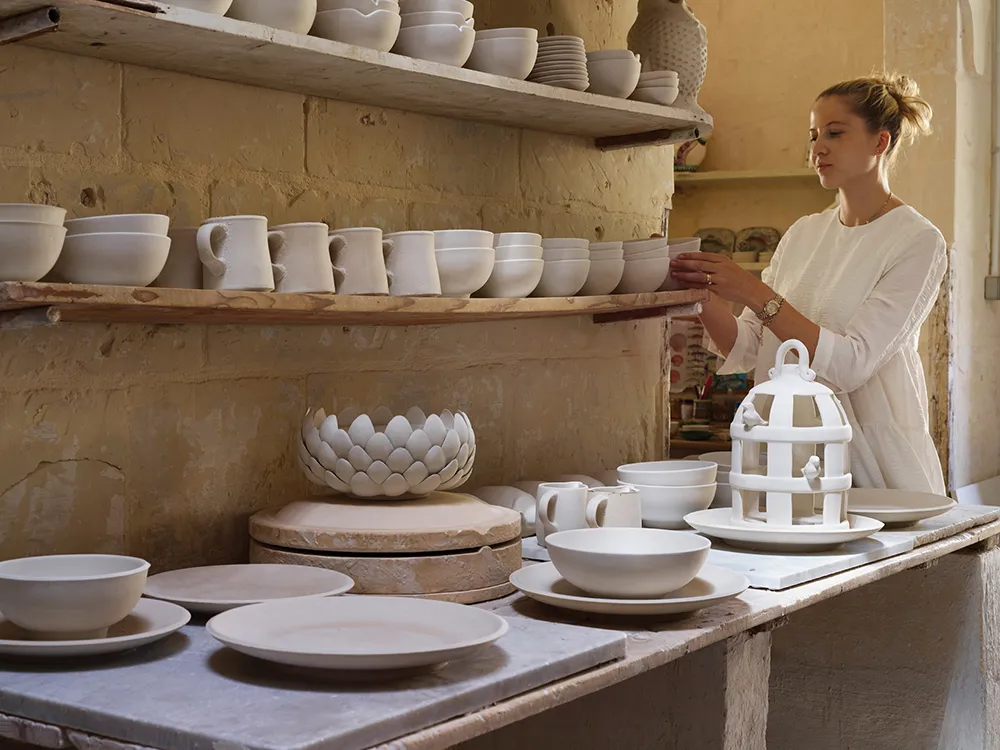
COURTESY OF VILLA BOLOGNA
The old structures here are being artfully redeployed. Take Renzo Piano’s 2015 parliament building, a rippled cube rendered in the same honeyed limestone used to erect its 16th-century neighbors. His initial plan to demolish the ruined former opera house next door proved controversial, so he instead repurposed the bomb-scarred site as an outdoor theater that serves as both a memorial and an amenity. Then there’s the one-time abattoir that reopened two years ago as the Valletta Design Cluster, a WeWork-meets-workshop complex aimed at creative startups whose primary-color-painted doors and windows have a whiff of De Stijl. Local architect David Felice and his firm, AP Valletta, are working on a major new home for the various artworks and tapestries from the city’s cathedral: a glass box grafted onto a series of old houses, earmarked for completion in 2024. And just outside the city walls is arguably the most ambitious creative project in the country: the Malta International Contemporary Art Space, or MICAS, which is set to open its 16,000 square feet of galleries next year.
It’s already a thrilling site to walk around. The iron-beamed skeleton for MICAS’s huge glass-walled rooms sits bolted to the remnants of the Old Ospizio, a 17th-century fortress that stored gunpowder safely away from Valletta proper. The museum’s modernist design, penned by the Florentine architecture firm IPO Studio, forms a stark contrast to those yellowish, weathered walls. Excavations unearthed ancient ruins—the Romans also saw the strategic value of these islands—and so forced the architects to rejigger their vision; another room now incorporates the big bricks into one of its walls.
On a sunny but brisk March day, the redoubtable chair of MICAS, Phyllis Muscat, picks her way through the site with curator and board member Georgina Portelli, proudly pointing to the rooftop sculpture garden, which will be home to temporary commissions and permanent pieces by the likes of Michele Oka Doner and Cristina Iglesias. They hope that MICAS will act as Malta’s answer to London’s Serpentine Galleries, a small but noteworthy space ideal for artistic takeovers, or the seaside Istanbul Modern. It’s already attracting attention: Sculptor Conrad Shawcross has committed to a site-specific installation this October, before the venue is even complete.
Similarly, Sultana, the interior designer, stresses that Malta’s move upscale is actually a return to its roots. Think back to the Knights of Malta, he suggests, the Christian order that combined chivalry, conquest, and care for the needy. Its aristocratic and international members, who helped take Jerusalem during the Crusades and ruled over parts of Greece, Italy, and, briefly, the Caribbean, in addition to Malta, left the island flush with their fortunes. “The Knights were very, very into luxury, so much gold leaf and great paintings,” Sultana says. “So people are not afraid of maximalism here.” He refers to the local aesthetic as “baroque and roll”—as much the Clash as Caravaggio. (Indeed, that serial rebel took refuge here in 1607, fleeing murder charges in Rome, and his largest work sits in the oratory of St. John’s Co-Cathedral.)
“I think of Malta as Marrakech in the Med,” says John Cooney, comparing these islands to the city where Yves Saint Laurent and his entourage formed a chic outpost of creative expats. Cooney is a Swiss Italian entrepreneur who moved to the island with his husband, Kevin Schwasinger, three years ago. Among other ventures, Cooney’s company Forbidden City designed and operated boutiques in Aman’s hotels for several years. He and Schwasinger now live in a converted palazzo originally built for one of the Knights of Malta but are developing a new five-bedroom hotel in a 17th-century complex in what is known as the Three Cities, a trio of towns that share Valletta’s harbor.
The hotel, called Cité Privée Maison Malte, is the first of an intended chain and will open in 18 months’ time alongside 20 residences located on nearby streets, also in old buildings that the couple are painstakingly restoring. Buyers can use the services of the hotel, and they can also deed the properties into the hotel’s rental pool for guests to book. Cooney says the appeal of developing beyond Valletta’s walls is that this part of the island hasn’t yet seen intense, mass tourism, despite being just a short boat ride away—you can take one of the luzzu, or Maltese gondolas, and glide across the harbor in less than 10 minutes. “This part is like living in an old Maltese village, before there were cars—for me that’s what is really enchanting,” he says. “You might have an old lady down the street screaming at the top of her lungs at her daughter, but other than that, there’s no noise.”
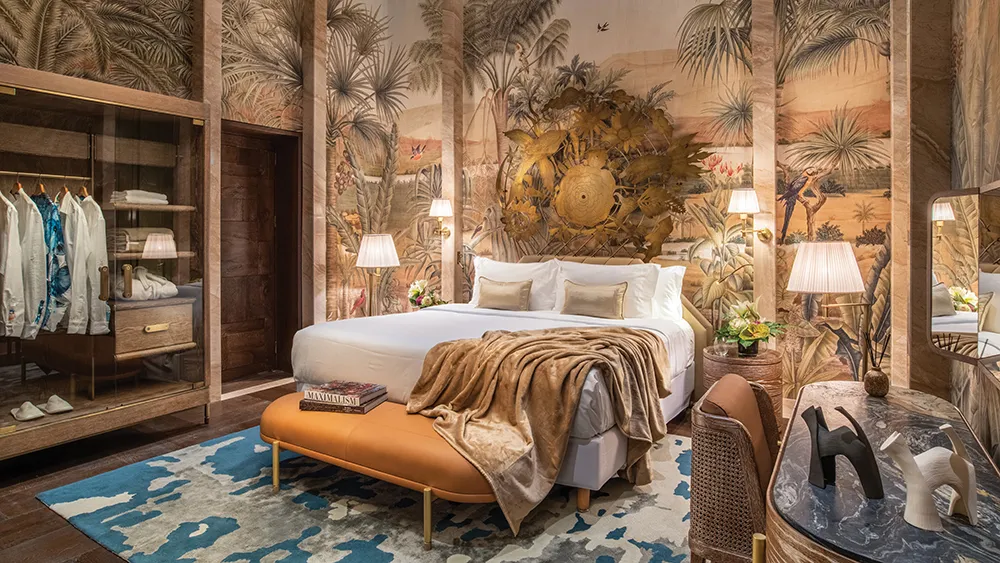
COURTESY OF INIALA HOTEL
Most exciting, though, is the raft of new hotels that are set to open, such as Casa Bonavita, a project by Sophie Edwards’s parents, Christopher and Suzanne Sharp, in a 1760 Baroque mansion they acquired about 12 years ago. The couple are the founders of interiors firm the Rug Company, and Suzanne is Maltese. “We’ve always had the problem that people say to us, ‘Where should I stay in Malta?’ And it’s really difficult, so we started thinking about the house we bought—it’s so large, it was a bit of a folly,” Christopher says of the site, which they’ve since painstakingly repurposed into a 17-room hotel set to bow next spring.
The government is supporting such efforts. It has put a grand former office in central Valletta on the market, expressly for conversion into a high-end hotel; the winning bid will be announced this summer. One of those chasing the deal is British businessman Mark Weingard, who moved to Malta from Spain a decade ago for the financial upsides but quickly embraced the island and its culture. He opened the first truly upscale hotel here, Iniala, which straddles several historic townhomes overlooking that harbor. “When you walk around Valletta, you can get confused,” Weingard says. “It’s this fusion of East and West, a mix of Jerusalem and Venice.” Another mark of his confidence in the destination’s uptick: He has just installed L’Enclume’s three-Michelin-starred chef, Simon Rogan, at the Michelin-starred Ion Harbour restaurant, only Rogan’s second site outside England.
But the biggest project is far from Valletta—indeed, it’s on another island entirely: Comino. Barely 1.4 square miles in size, Comino is mostly a protected habitat now, having once been farmland. Just one resident remains, a man in his 70s who lives self-sufficiently on a small plot. There is modern construction on Comino, though, and it’s yet another legacy of that rush to mass tourism in the wake of World War II: two connected sites, on the island’s northern coast, one a hotel complex and the other a series of hotel-operated villas. They’d slumped from their hey-day, booked mostly to package vacationers, and were shuttered four years ago. Malta’s government hoped to hand the sites over to a new developer who would reimagine them entirely for luxury tourism—and that entity was Malta-based Hili Ventures.
Now surrounded by metal fencing, the abandoned buildings have an eerie quality, shabby but solidly constructed with little consideration for the surrounding countryside. The landscape is typical of Malta: low-lying brushland, free of trees, with clusters of shrubs huddled together against the winds. Hili hopes that a recently announced deal with luxury hotelier Six Senses to operate the property will single-handedly draw luxury travelers from around the world to Malta. Only time will tell.”
The Lowdown
GETTING THERE No airlines offer long-haul flights to Valletta, so most North American visitors arrive via a European hub. For charters within Europe, the Maltese private-jet facility is located at the main airport but has its own stand-alone terminal; try Hans Jet for reasonable options. La Valette Club can handle VIP customs and arrival.
GETTING AROUND The archipelago’s roads can be chaotic. It’s smartest to hire a driver to scoot around the islands without white knuckles; Dacoby has the best chauffeurs.
ACCOMMODATIONS The top choice is Valletta’s Iniala Harbour House, with 23 rooms and suites. There are five penthouse-suite-style options—the best, dubbed the Lucija, boasts a private plunge pool. The four-bedroom Hideaway, an annexed property a few doors down from the main hotel, is available for buyouts, too. From about $382 per night.
RESTAURANTS In Valletta, try the Harbour Club for sundowners. Gracy’s, owned and operated by British businessman Greg Nasmyth and his wife, Samantha Rowe-Beddoe, is a members’ club whose brasserie is open to the public: Come on a Sunday for a buzzy afternoon scene or book the plush private karaoke room downstairs. Noni is one of the city’s six restaurants with Michelin stars, run by local chef Jonathan Brincat and his sister and maître d’, Ritienne. The food is playful and unstuffy: Order the superb, deconstructed prawn cocktail.
Outside the city, try Carmen’s, a waterfront bar and restaurant on Għar Lapsi on the south coast—casual but disarmingly delicious, especially on a warm spring day. Il Corsaro, in the historic town of Żurrieq, is owned and run by an old Italian; think freshly made pasta, menus on chalkboards, and a room full of hungry locals.
ACTIVITIES Malta doesn’t have many appealing sandy beaches; instead, expect craggy edges at the waters. Head down to the southern coast for the quietest perches: The swimming holes at Wied iz-Zurrieq are reachable from the rocks, as is the Blue Grotto arch there; the sea off Ghar Lapsi is easily swimmable, too. The walks in and around Dingli Cliffs are spectacular in the late afternoon. For diving, the oldest local club is Atlam SAC; standout sites include the Bristol Beaufighter World War II wreck at 124 feet or the SS Polynesian, a French liner sunk during World War I that lies at 223 feet.
OPERATORS Fischer Travel and Red Savannah, both Robb Report Travel Masters, have expertise in the islands. Note that weather is mostly pleasant year-round, but try to avoid January and February, which can be rainy and cold; December is often surprisingly balmy, while midsummer will be brutally hot.
Subscribe to the Newsletter
Recommended for you
This New Safari in Namibia Takes You on Dune Drives Like an IRL Mad Max
Ker & Downey Africa’s fully customisable itinerary lets you channel your inner Max or Furiosa with a slew of activities inspired by the film franchise.
September 11, 2025
Spa Trek: Raes Spa Byron Bay
Byron’s most iconic hideaway redefines coastal indulgence.
September 5, 2025
You may also like.
You may also like.
Inside the $30 Billion Obsession Among the Ultra-Wealthy : A Race to Live Longer
The pursuit of an extended life has become a new asset class for those who already own the jets, the vineyards, and the art collections. The only precious resource left to conquer, it seems, is time.
If you want to know what the latest obsession is these days among the ultra-wealthy, listen in at dinner.
Once it was crypto, then came AI and psychedelics, now it’s longevity all the time. The talk is of biomarkers, NAD+ levels, and methylation clocks, of senolytics and stem cells. Guests compare blood panels like wine lists, and the most important name to drop is no longer your banker or contact at Rolex but your longevity physician. For those just arriving at the conversation, the new science can sound like science fiction—but it’s fast becoming the lingua franca of money.
The field has its own vocabulary—epigenetic reprogramming, which aims to reset cellular clocks; cellular senescence clearance, the removal of “zombie” cells that clog our systems as we age; precision gene therapies, designed to personalise interventions at the level of DNA—that sounds equal parts Brave New World and Wall Street pitch deck. But make no mistake: this is no longer a niche pursuit. The sector is already worth an estimated $30 billion globally and projected to surpass $120 billion within the decade, having attracted billions in investment from the likes of Altos Labs, Juvenescence and Google-backed Calico. Tech titans and old-money families alike are staking claims on the possibility of an extra decade or two. It’s a space where venture funds court Nobel laureates, hedge funds bankroll gene-therapy moonshots, and even wellness festivals in Australia draw rock-star scientists to the stage.
The Poster Child and the Pitch
David Sinclair, the Sydney-born Harvard geneticist who has become something of a poster child for the field, is quick to underline the stakes. “We’re not just talking about lifespan, we’re talking about health span,” he tells Robb Report. “Extending the number of years people live well—without frailty, without disease—isn’t just a medical breakthrough. It’s a social and economic one.” Sinclair, whose research ranges from NAD boosters to epigenetic age-reversal therapies, has calculated that adding a single year of healthy life to the US population, for example, could be worth $38 trillion in economic benefit—fewer years of costly aged care, less burden on hospitals, more years of productivity and compounding returns. In other words, the dividends of health are financial as well as personal. “That’s why governments and investors are paying attention,” he says.
Sinclair has become a fixture on the global circuit, drawing crowds that rival TED or Davos. As Radek Sali, the Australian entrepreneur behind the new Wanderlust Wellspring longevity festival taking place on the Gold Coast this October, where Sinclair is the keynote speaker, puts it: “Wellness has moved into the realm of entertainment.” At Wellspring, platinum-tier guests pay up to nearly $2,000 for the privilege of hearing scientists and investors share the stage over a weekend like headliners at Coachella.
Investing in Time
And then there are the sideshows. Bryan Johnson, the tech mogul turned human guinea pig, makes headlines with his open-source, organ-by-organ data tracking—his infamous “penis readings” have become cocktail-party fodder. While many dismiss him as a parody of the field, his multimillion-dollar project Blueprint has nevertheless made longevity impossible to ignore in the mainstream.
For the uninitiated, the science of longevity today is no longer about vitamin salesmen or fringe dietary regimes. This is the new frontier—one where biology is not just observed but engineered, and where investors smell opportunity on par with space travel. It’s little wonder that Altos Labs has raised billions to chase cellular rejuvenation, or that Juvenescence has secured more than $400 million to fast-track therapies. What was once the realm of eccentric tinkerers now attracts sovereign wealth funds.
“This body takes me to meetings, earns me money—why not invest time and money into it?”
The appeal to the One Percent is obvious. Longevity is a natural extension of portfolio thinking: diversify your assets, hedge your risks, and above all, maximise return on investment. Except in this case, the returns are measured in years of health, energy and cognition. As Andrew Banks, a Sydney-based entrepreneur and early investor in Juvenescence, explains: “This body takes me to meetings, earns me money—why not invest time and money into it?” His Point Piper home teems with contraptions—a Reoxy breathing machine, hydrogen therapy, red-light sauna, and he spends a few hours a day on maintenance, as if his body were a private equity stake.
Banks, like others in his cohort, is baffled that more wealthy men haven’t followed suit. “Entrepreneurs pride themselves on divergent thinking,” he says. “They expand, dream and create businesses with it. But when it comes to their bodies, they’re convergent—unimaginative. The lack of curiosity is astonishing to me.”
Medicine 3.0 and the New Rituals
Steve Grace, a Sydney-based entrepreneur and the proprietor of exclusive private networking club The Pillars, which is opening a longevity program, thinks there is a reckoning coming for those who do not take matters into their own hands. “As someone who has run a few recruitment businesses,” he says, “I can tell you that if you’re a man or woman in your 50s and working as an employee, even in a really good position, it’s time to get worried about job security and being aged out of the workforce. You have to make yourself as vital as possible and become the best version of yourself, or you’re toast.”
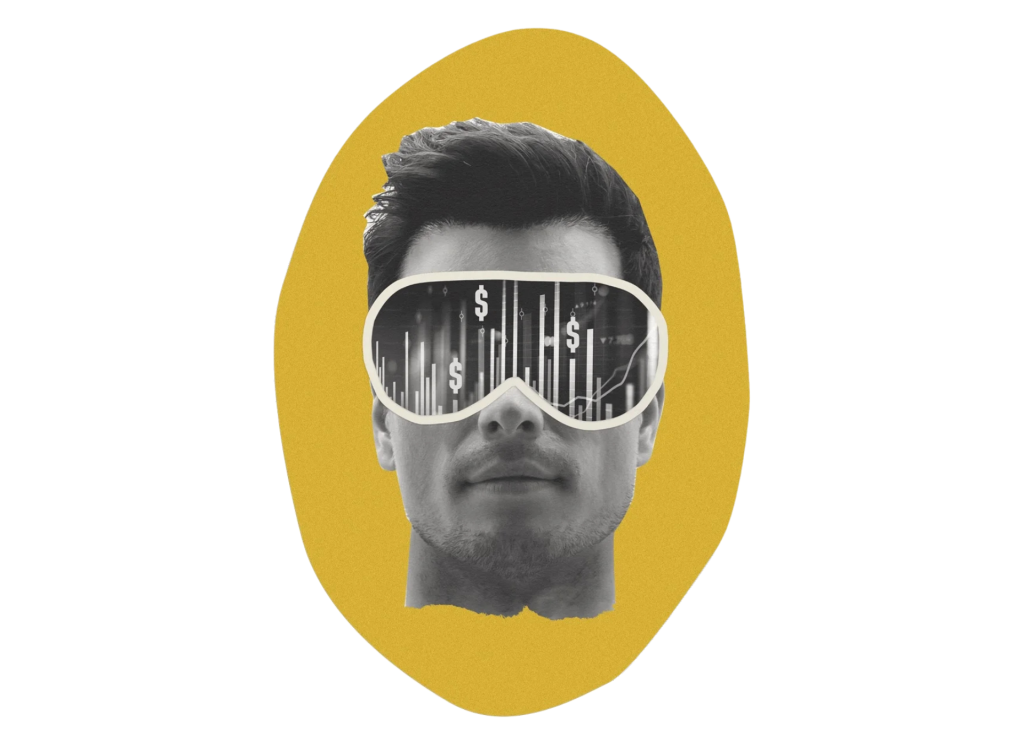
What was once fringe has now become a cultural necessity for those who can afford anything, with science finally catching up to ambition. Sinclair’s lab at Harvard recently published a study on the reversibility of cellular ageing—restoring vision in blind mice and setting the stage for human trials in conditions like glaucoma. In Boston, his company Life Biosciences will begin treating patients with blindness in a Phase I trial using partial cellular reprogramming early next year. “This isn’t science fiction anymore,” Sinclair says. “We’re at the point where we can reprogram cells, turn back their biological clocks, and restore function.”
Meanwhile, practitioners like Dr. Adam Brown of the Longevity Institute in the Sydney suburb of Double Bay are reinventing diagnostics. His “assessment menu” has been compared—only half-jokingly—to a Michelin Guide for medical testing: full-body MRI scans, continuous glucose monitors, polygenic risk scores. “What we do is proactive, not reactive,” he says. “Correct deficiencies first, then optimise health. That’s how you get peak performance in the short term and resilience in the long term.” Brown frames longevity in terms that would resonate with any investor: “There’s a short-term ROI—fixing glucose or sleep issues so you perform better tomorrow. And there’s a long-term ROI—functioning in your 70s as you would in your 40s. That’s extending your career, your income potential and your independence.”
“Once upon a time, male vanity meant injectables, veneers and a tan. Today, it’s VO2 max scores and continuous glucose monitor readouts.”
Peter Attia, the Canadian-American physician and podcast host who has helped popularise the concept of “Medicine 3.0”, echoes this emphasis. Medicine 1.0, according to him, was about surviving infections. Medicine 2.0 was about treating chronic disease. Medicine 3.0 is about staying ahead of decline: measuring, monitoring and intervening early. “The goal is not just to avoid disease but to lengthen health span,” Attia has said.
For those already converted, longevity is less about lab science than daily rituals. Sydney-based Chief Brabon, who trains CEOs like athletes, says: “These men are like Formula One cars—you don’t wait until the tyres are bald before swapping them. You keep everything tuned, precise, optimised.”
That tuning now involves more gadgets than ever: hyperbaric oxygen chambers, cryotherapy, sauna/cold-plunge circuits, peptide stacks, nootropics. And yes, a glut of supplements, some with evidence, others little more than wishful thinking. Once upon a time, male vanity meant injectables, veneers and a tan. Today, it’s VO2 max scores and continuous glucose monitor readouts. “Health is the new flex,” as Steve Grace quipped, glancing at his wrist-worn biometric tracker.
The New Flex: Health as the Ultimate Luxury
Still, there is plenty of scepticism. Some therapies are unproven, others prohibitively expensive. And there is the unavoidable fact that many leading scientists, including Sinclair, have stakes in companies producing supplements and therapeutics, raising eyebrows about conflicts of interest. “The difference,” Sinclair insists, “is whether it’s backed by peer-reviewed science and measurable biomarkers. If it can’t be quantified, it’s marketing, not medicine.”
Then there are the contradictions. It promises democratisation while often priced like a private club. It champions science but thrives on hype. It seeks to extend health span but risks deepening class divides. “Only if we let it,” Sinclair says when asked if longevity risks becoming the preserve of the wealthy. “Like antibiotics or aspirin, these advances should become widely available and affordable once they scale.” Sali agrees, but from another angle: “Biohacking doesn’t have to be expensive,” he says. “The blue zones prove that—community, diet, movement, purpose. Those are free. Wellspring is about making that knowledge accessible.”
And yet, for all its shortcomings, the movement is here to stay. Investment continues to pour in. Technology—like senolytic drugs that clear aged cells or AI-driven platforms that predict individual disease risk years in advance—is moving from speculation to clinical trial. Scientists are being recast as influencers. And the wealthy, always in search of the next advantage, have found in longevity a pursuit as old as alchemy, yet dressed in the language of venture capital. The truth is that health has always been an asset. What’s new is that it’s now being traded, optimised and measured like one.
In the end, longevity is less about a moonshot than about curiosity. Banks, Sali, Sinclair, Attia are all, in their own way, betting on time. Perhaps the most radical idea is also the simplest: that the best-performing asset in any portfolio is the body itself. Unlike Bitcoin, it carries you to meetings. Unlike art, it cannot be stored in a vault. Unlike real estate, it is non-transferable.
The new calculus of longevity is the recognition that the ultimate luxury is not wealth or status, but a few more decades of clear thought, strong bones and good company—and the ability to make money off it. Everything else, as one investor put it, is just a rounding error.
You may also like.
How Sailing Shaped Loro Piana’s Most Iconic Designs
Pier Luigi Loro Piana grew his family textile business into a celebrated fashion house by following his passion for sports on land and at sea.
The Regatta Connection
The race village at Port de Saint-Tropez is awash with people in nautical navy and white, the de facto dress code for the Loro Piana Giraglia regatta. This is the second year the fashion house has lent its name to one of the Mediterranean’s most prestigious summer races. The course zooms from the French coast to Genoa, Italy, taking a sharp turn past Giraglia, a small island off Corsica’s northern tip. It’s the latest in a long line of marine events the brand has sponsored, dating back more than 20 years.
The link between sailing and the brand—and more consequentially the Loro Piana family—is exemplified by the man Robb Report is here to meet: Pier Luigi Loro Piana. An avuncular figure in his 70s with the physique of a man who has enjoyed life, Pier Luigi fell in love with sailing in his late teens, when a family friend took him for a cruise in a sloop.
“Using the wind to go faster or slower, driving the boat like it has an engine, it’s really fascinating,” he says. Inevitably, he started competing. “When you’re sailing, you’re always looking for other boats to go and fight with. It’s an instinct,” he says. And then, with considerable understatement, “I think it’s a nice hobby.”
A Life Under Sail
He currently owns two boats: My Song, which you can see on these pages, is a 25 m sailing yacht that competed in the Regatta. There’s also Masquenada, a comfortable 50 m explorer. It’s a commendable set-up befitting a man who shaped one of Europe’s most celebrated fashion houses.
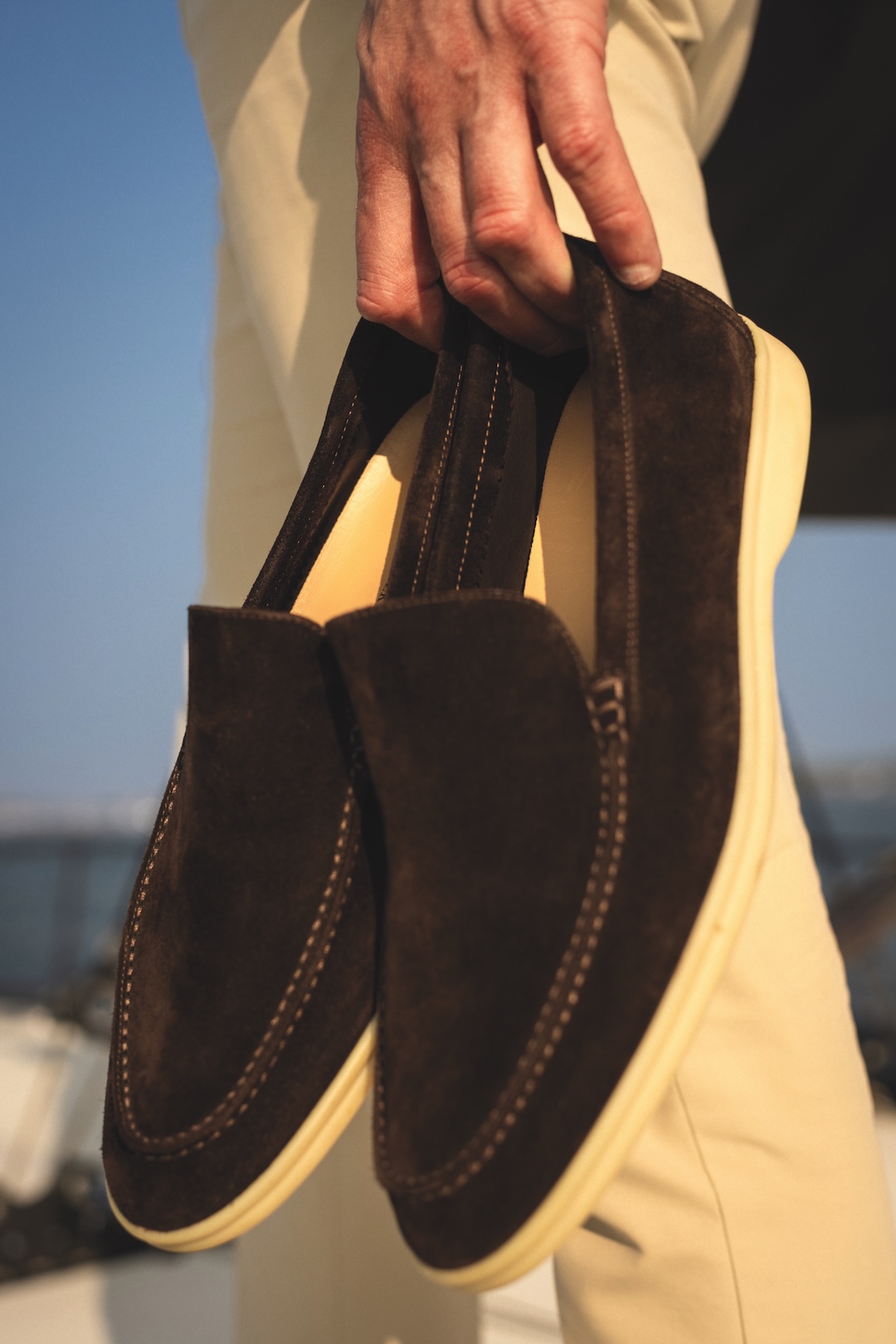
A Family Business Turned Global Powerhouse
The textile and clothing company that bears his family’s name was launched by an ancestor, Pietro Loro Piana, in 1924. A few generations later, Pier Luigi and his brother, Sergio, would run it for four decades until LVMH acquired a majority stake for around $4 billion in 2013. Sergio passed away that year; his widow and Pier Luigi still own a share of the brand between them.
The brothers proved innovative custodians, moving the company upmarket with an insistence on ultra-fine materials and groundbreaking fabrications. And the connection with sports—specifically yachting, horseback riding, skiing and golf—is integral to how the brand positions itself. As Pier Luigi recalls, such associations often had self-serving origins.
“These are the sports my brother and myself were doing,” he says. “We were very committed in business in the 1970s, ’80s, ’90s, so we were like our customers: people that like to work hard but also play hard. And that meant sports.”
Innovation Born of Necessity
This affinity often led them to develop durable, yet elegant, materials and gear for their off-duty pursuits, eventually offering versions to their athletic clientele. “We engineered products with unusual properties, natural fibres like wool or cashmere with a membrane that makes it waterproof and windproof… For research and development, I was the first victim,” he says with a chuckle. Once, he wanted a ski jacket that was “warmer, lighter, softer and better” than nylon models, so he made a prototype to test on the slopes. It gave birth to the Loro Piana Storm System, launched in 1994. The line’s wind-resistant waterproof wool and cashmere has since been used by brands around the world. “I still have this jacket,” he says.
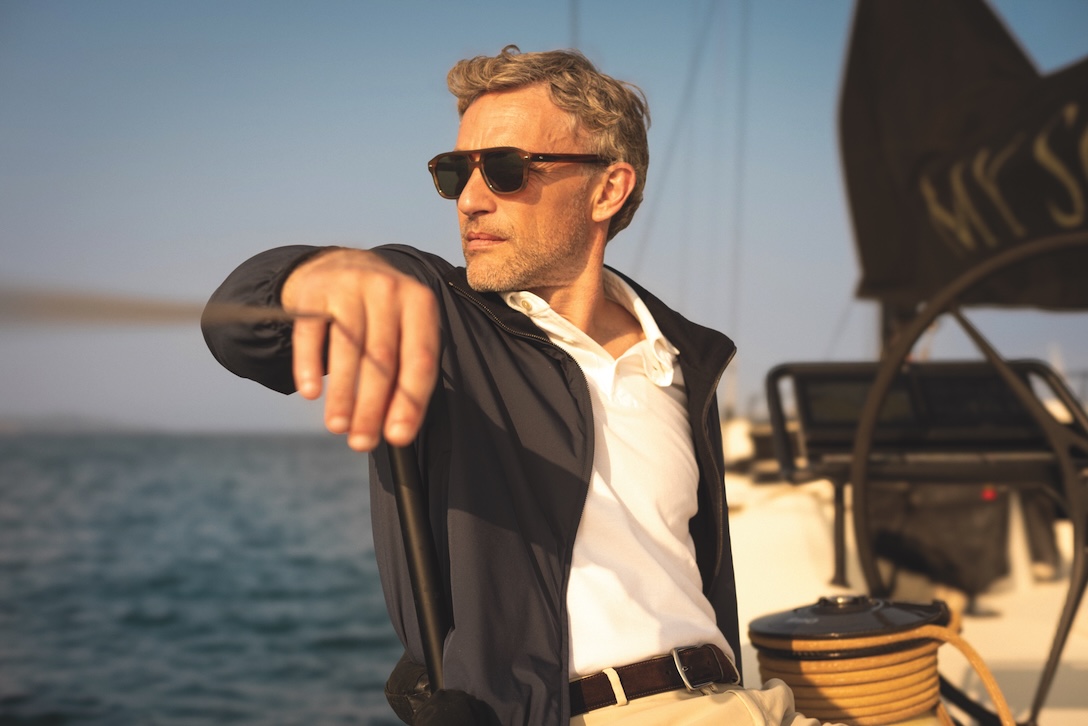
The same process happened on the water. A beloved reversible bomber, with knitted cashmere on one side and waterproof polyester on the other, was born from Pier Luigi’s need for a functional jacket to wear on his yacht. “It’s very light, doesn’t wrinkle, it’s warm, windproof,” he says. “It solves so many problems.”
He takes less credit for perhaps the brand’s most famous—and almost certainly most imitated—product, the white-soled suede Summer Walk loafers. “That was my brother,” he says. “When we were 20, 30 years old, we went sailing and there were only [Sperry] Top-Siders or Sebagos. But when the soles got worn, they got hard and slippery.”
The answer: a non-marking sole with grip—“like a tire you use in Formula 1 when it’s wet”—which Sergio got his bespoke shoemaker to sew to suede uppers. Eventually, they produced two versions: a loafer and the Open Walk, a model with a slightly higher top. “We discovered people were using them also for formal wear because they were so comfortable,” says Pier Luigi. “It’s really a successful story that started from product research.”
And if problem-solving can turn your family business into a giant of global style, clearly it pays to be a little selfish.
You may also like.
The Supercar of Pool Tables
In a rare fusion of Italian design pedigree and artisanal craftsmanship, Pininfarina and Brandt have reframed the barroom game as aerodynamic high art.
In the rarefied realm where leisure meets design, the latest object of desire doesn’t purr down the autostrada—it commands the room from a single sculptural base. The Vici pool table, a collaboration between Italian automotive legend Pininfarina and Miami’s bespoke table-maker Brandt Design Studio, reimagines the game with the same aerodynamic poise and artisanal precision that have graced some of the world’s most beautiful vehicles.
Named for Julius Caesar’s immortal boast—“Veni, vidi, vici”—this limited-edition series transforms billiards from casual diversion into a declaration of style. Every curve is deliberate, from the ultra-thin playing surface clad in tournament-grade Simonis cloth to the seamless integration of Italian nubuck leather and precision-milled metals. The effect is more haute sculpture than barroom pastime—yet it meets exacting professional standards.
For the true connoisseur, the debut PF 95 Anniversario edition celebrates Pininfarina’s 95-year legacy in just 95 numbered pieces. Finished in dark-blue lacquer with rose-gold accents and a flash of red felt, each table is discreetly nameplated—a tangible claim to an heirloom in the making.
“It’s not just about how it plays—it’s about how it lives in a space,” says Dan Brandt, the master craftsman whose work has long graced the world’s most exclusive interiors. Whether anchoring a penthouse salon, a members’ lounge or the main deck of a superyacht, the Vici is designed to stir conversation before the first break.
For those accustomed to Pininfarina’s sleek automotive silhouettes, this is a chance to bring that same lineage of movement, form and Italian refinement into the home. Only now, the horsepower is measured not in engines—but in the geometry of a perfect shot.
From pool to midcentury to Ottoman, we’ve got all the table angles covered at Robb Report Australia & New Zealand —plus more home-worthy pieces.
You may also like.
Ralph Lauren’s Oak Bluffs Collection Is a Masterclass in Classic Summer Style
The capsule honours the heritage of the Martha’s Vineyard community, which has been a haven for generations of Black families.
Building on his partnerships with Morehouse and Spelman colleges, Ralph Lauren now takes us off campus to Oak Bluffs for summer break. A haven for Black communities on Martha’s Vineyard for more than a century, Oak Bluffs’s generations of style and tradition come together in a collection of menswear and womenswear that marries elements of classic collegiate style with coastal leisurewear. “This collection is about more than a charming coastal town; it’s a story of the American dream,” said Ralph Lauren, who called on alumni of the two schools working at Ralph Lauren to conceptualise and design.

As with any story, visuals are key. Lauren enlisted author, director, and producer Cole Brown, who has summered on Martha’s Vineyard for decades, to bring the stories of Oak Bluffs to life. The campaign, which was lensed by photographer Nadine Ijewere and videographer Azariah Bjørvi, both of whom worked on the award-winning Polo Ralph Lauren campaign with Morehouse and Spelman Colleges in 2022. The partnership paid off, with transportive imagery that reads more like a family album than an ad campaign. Anchoring it all is a short documentary that mines archival footage and features the stories of business owners, multi-generational homeowners, and other locals along with Morehouse and Spelman alumni.

“Every piece in this collection tells a story, from quilted souvenir jackets to collegiate crewnecks and cardigans. We’ve captured the spirit of this town—its leisurely summer bike rides, its five-to-seven front porch socials, its nautical traditions—and transformed that into designs that feel as special as the place itself,” David Lauren, the brand’s chief branding and innovation officer, tells Robb Report. The Polo Ralph Lauren for Oak Bluffs collection will be available on RalphLauren.com, the Ralph Lauren app, select Ralph Laure stores, and Morehouse and Spelman College bookstores.

About those front porches: To encourage another century of idyllic, cedar-shingled summers, Ralph Lauren has also partnered with the Cottagers, Inc., a nonprofit of 100 Black female homeowners on Martha’s Vineyard focused on architectural and cultural preservation. The brand is also continuing its partnership with the United Negro College Fund, supporting HBCU scholarships and fostering early talent development and recruitment opportunities.
View the full-length documentary, A Portrait of the American Dream: Oak Bluffs, on YouTube. A special screening and panel discussion will also take place on August 8, 2025 at the Martha’s Vineyard African American Film Festival.
You may also like.
Home is Where the Art Is
Six standout Australian galleries to know now.
Australia’s gallery scene is booming. More galleries than ever before are going on the road to participate in art fairs in scene that is rapidly maturing. Meet the passionate local owners from around Australia who are energising the creative milieu with the abstract, the edgy, the Indigenous and the generally astounding.
Hugo Michell Gallery

The district may not roll off the artistic tongue like Paris’s Montmartre or London’s Shoreditch, and yet the prim hedges of Adelaide’s Beulah Park suburb provide cover to a stealth powerhouse of the Australian contemporary art movement, tucked away in a charming, blink-and-you’ll-miss-it converted Victorian workers’ cottage. Since 2008, the Hugo Michell Gallery has unflappably carried the torch for established and emerging acts with equal fidelity, across a broad sweep of mediums from photography to printmaking, textile to ceramic. “We try not to get caught up in the hype and handle each artist we represent with the nuance required for promoting their work,” says Michell, currently counting 28 artists on his books. One notable on this year’s busy docket is Melbourne-based Richard Lewer, a social realist—already snapped up by the National Galleries of Australia and Victoria, no less—who for a month from April 10th will probe the uneasy relationship between crime, sport and religion. While comfortable in the skin of his homely suburban bolthole, Michell is not averse to braving the rigours of the Australian art fair circuit (“They’re a bit of a circus, but who doesn’t love a circus?) and often undertakes house visits to acquaint himself with the whims of new customers. “One of the things that gives me the most joy is building a collection for a client,” he says. “We have worked with for 16 years, tailoring and sourcing works for them.” More proof that you don’t need a headline location to generate the biggest stories.
hugomichellgallery.com
Cassandra Bird Gallery

The art sphere often challenges the myth that married partners should not become gallerists—see Iwan and Manuela Wirth of Hauser & Wirth fame, among other examples. And so it is that Cassandra Bird and husband Fabian Jentsch are rapidly cementing a reputation as one the Australian art scene’s supercouples with their 2023-acquired Potts Point space, an expansive four-level heritage terrace fizzing with congeniality, making visitors feel like they have popped to a friend’s (expertly curated) home for elevenses. Which is no great shock: the property doubles as the duo’s own home. Bird brings a wealth of experience, and a hefty contacts book, thanks to long, respected stints in the Big Apple and Berlin, and nine years at Sydney’s RoslynOxley9 Gallery; Jentsch, meanwhile, is an experienced artist, exhibition maker and set designer. “We try to enthuse people, get them excited as we are about those we work with,” says Bird. Meander across the property’s wooden floorboards—perhaps diverting for a chat in the communal courtyard that doubles as a social hub and ideas-exchange forum—and you will enter the realm of Perth-born graphic painter Jedda Daisy-Culley, who has a hallway and wall dedicated to her work; venture upstairs and deep dive into locally based experimental photographer Laura Moore; head into the basement and peruse the collective works the Tennant Creek Brio, out of Warumungu Country in the Northern Territory. All 24 of the gallery’s artists unite under the theme of timelessness. “We are into investigating quality and showing transformational and breakout work from artists,” says Jentsch. “The work we choose must have something that is strong value for us.” Here’s to the sanctity of marriage.
D’lan Contemporary

It speaks volumes for the international reach of Indigenous art that D’lan Contemporary opened an outpost in New York long before expanding the gallery beyond its Melbourne roots to set up shop in Sydney. Then again, founder and director D’lan Davidson is not afraid of expanding his frontiers as a means of hawking Australia’s most vital cultural outpourings; in 2016, he left the Sotheby’s Australia auction house, where he was ensconced as head of aboriginal art, to launch D’lan Contemporary as the go-to gallery for secondary market First Nations art; and he recently travelled to Maastricht in the Netherlands for the prestigious European Fine Arts Foundation Art Fair, promoting a series of Western Arnhem bark paintings and works by Paddy Bedford, Emily Kame Kngwarreye, Rover Thomas and other. Closer to home, Davidson has surrounded himself with a team brimming with the requisite Indigenous art smarts, including chief curator and gallery director Luke Scholes. From May 8th-July 4th, the Significant exhibition, a mainstay of the Melbourne gallery for the past ten years, will show across all three of D’lan Contemporary’s locations. “Our exhibitions and all our advocacy work seek to further support and develop the burgeoning global interest in Australian First Nations art and artists,” says Scholes. As if further proof were needed of its commitment, the gallery donates 30 percent of its profit back to artists and their communities. Bravo.
N.Smith Gallery

Enter Nick Smith’s compact office and you notice how the walls are studded by the artworks of those he represents; this is a man, you feel, who has a more intimate connection to his stable than the average gallery chief—an instinct confirmed upon discovering that he has invested his entire life savings into the Surry Hills space. When we meet, Smith’s whiteboard is teeming with collaborative projects, hinting heavily at the kind of edgy, thought-provoking artists that his outfit—comprised of five full-time staff—is renowned for nurturing. “It’s constant, but amazing,” says Smith in his typically reserved manner, more studious scientist than reengage gallerist. “I wanted to contribute to culture in my own way.” The gallery’s current ascension allays any empathetic fears of impending financial doom. This past February, Smith—who cut his teeth at Philip Bacon Galleries in Brisbane and Sydney’s Sullivan+Strumpf—collaborated with the Australian High Commission in India to represent Darrell Sibosado at India Art Fair ’25, and throughout the year will be partnering with the Sydney chapter of Soho House to host a series of private viewings and artist studio visits. Even so, he now splits his time equally between private and public projects, often mentoring artists at all stages of their creative journeys. “It’s that forward momentum. It’s that feeling of progressions and going somewhere that I love,” says Smith. Indeed, the only way is up.

Palas
It is hard—nay, almost impossible—to imagine Palas founders Tania Doropoulos and Matt Glenn frantically trying to scoop up whoever is flavour of the month on Sydney’s perennially shifting art circuit. Here are young gallery partners prone to a slower, more considered approach, instead recruiting a tight roster of internationally famed artists, and choosing to nurture relationships that have been years, sometime decades, in the making. Case in point: video performance maestro Shaun Gladwell, who represented Australia at the 2007 Venice Biennale (a 20-year affiliate), and Melbourne-based artist and noise-musician Marco Fusinato (15 years), who also flew the artistic green and gold at the same festival in 2022. Add to that list Canadian multi-media artist Tamara Henderson and Irish sculptor Eva Rothschild, currently working out of London, and it is clear Palas have a formidable roll call to lean on. “We’re investing a huge amount of time into their processes as art makers,” says Doropoulos. “And I think by extension, we’ve got really good working relationships with other galleries throughout the world.” For its founders, the Palas gallery—which opened in Sydney’s resolutely hipster Waterloo suburb just over a year ago with a silkscreen painting medley by the aforementioned Fusinato—is somewhat of a flag-planting endeavour on home soil: both earned a certain amount of their stripes overseas—Doropoulos as former artistic director of Frieze London and Frieze Studios, and Glenn at Sadie Coles HQ, also in the British capital. Australian art disciples will no doubt be praying for a long domestic residency.
Coma

If Sotiris Sotiriou’s consciously balanced ensemble of black Saint Laurent suit, single gold chain and flash of bare chest are anything to go by, the Coma gallery founder wields a sharp eye—a handy attribute to have when your career depends on identifying aesthetic clout, what hits and what doesn’t. From humble beginnings in 2016 in a subterranean road space next to Elvis Pizza on Sydney’s New South Head Road, his enterprise gradually flowered, first to East Sydney, then Chippendale, before fully blooming at his current space in up-and-coming Marrickville, in what was once a coffee factory. The predominantly light-industrial area has witnessed around half a dozen new gallery debuts in recent years, and Coma’s door-fling, filled as it was with hip young Inner West couples sourcing bold, ambitious art for their homes and offices, suggests Sotiriou has timed his arrival to perfection. February’s opening exhibition was hosted by Australian (but Santa Fe based) figurative painter Justin Williams, whose approach riffs on the folkloric traditions of Russian and Polish art, rich with symbolism and psychological details; this work forms a striking counterpoint to the abstract expressionism of other Sotiriou recruits, such as Zara June Williams and her partner Jack Lanagan Dunbar. The Coma head honcho, who had a spell selling to wealthy clients at Nanda Hobbs, says that private clients now make up most of his customer base. This year, as he prepares to attend three international art fairs, he estimates his artistic head count to increase by 30 percent. He can, no doubt, also point you in the direction of a fine tailor.






